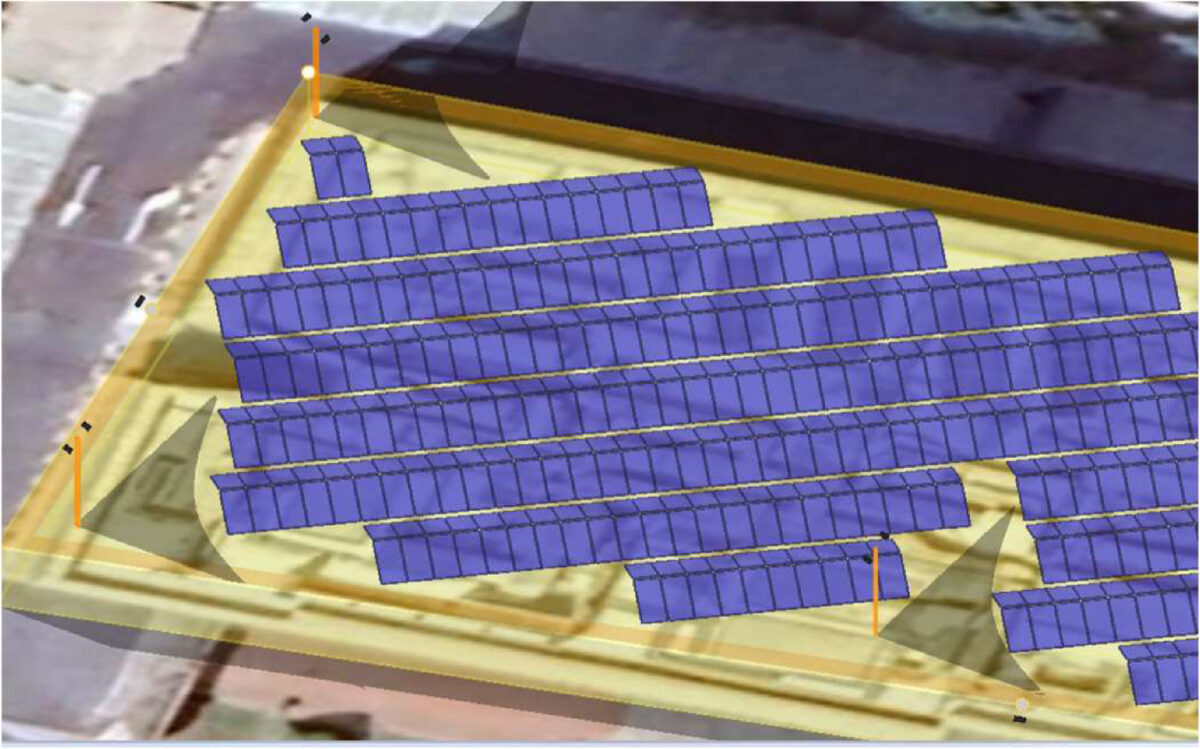A group of scientists at the University of Wollongong in Dubai has proposed a new approach to deploying direct lightning protection technology at sites hosting PV systems with an east-west orientation and with limited spacing between the panels.
They explained that integrating direct lightning protection in this kind of solar array is difficult in terms of compliance with the requirements of the Earth Terminal System (ETS) and direct lightning strike protections, particularly in rooftop installations.
“The proposed method introduces equations to support the innovative approach for horizontal lightning masts and addresses earth grid requirements under varying moisture conditions,” the group said. “The equations provided by the paper enable engineers to configure the panel setup for east and west orientations using just three sets of data while ensuring compliance with direct lightning strike protections.”
In the paper “A novel lightning mast layout to Eliminate Shading Effect on PV panels,” published in Electric Power Systems Research, the research group explained that conventional lightning protection solutions such as tall mast installations may result in considerable shading over the panels, and said that the proposed approach allows a proper steel layout of the panels to meet lightning protection standards without any shading.
“In a scenario where solar panels are installed back-to-back, with one side facing east and the other facing west, the traditional installation of lightning masts is not feasible without causing shading on the panels,” the academics stated, noting that shading can lead to hot spots and decreased panel efficiency. “The innovative approach involves installing horizontal lightning masts along the panel length instead of vertical ones.”
The proposed system also utilizes horizontal rods made of copper straps attached to the steel support structure of the panels. “This setup ensures that the length of the horizontal copper rod is kept short and varies depending on the length of the panel,” the academics emphasized. “These lengths are based on panels up to 600 W in the current market.”
They also warned that the selected copper strap, rod, or shield wire should not sag under its own weight or heavy wind conditions and said project developers could also consider utilizing copper-clad steel rods that meet the necessary current-carrying capacity and are resistant to damage from lightning strike energy. “These types of rods or straps offer strong tensile strength,” they stated. “The distance between the drop conductors must adhere to relevant standards and policies as outlined in the reference.”
The proposed guidelines can offer adequate lightning protection against the risk of damage during storm conditions and also help reduce costs for the earth grid, according to the research group.
This content is protected by copyright and may not be reused. If you want to cooperate with us and would like to reuse some of our content, please contact: editors@pv-magazine.com.




By submitting this form you agree to pv magazine using your data for the purposes of publishing your comment.
Your personal data will only be disclosed or otherwise transmitted to third parties for the purposes of spam filtering or if this is necessary for technical maintenance of the website. Any other transfer to third parties will not take place unless this is justified on the basis of applicable data protection regulations or if pv magazine is legally obliged to do so.
You may revoke this consent at any time with effect for the future, in which case your personal data will be deleted immediately. Otherwise, your data will be deleted if pv magazine has processed your request or the purpose of data storage is fulfilled.
Further information on data privacy can be found in our Data Protection Policy.